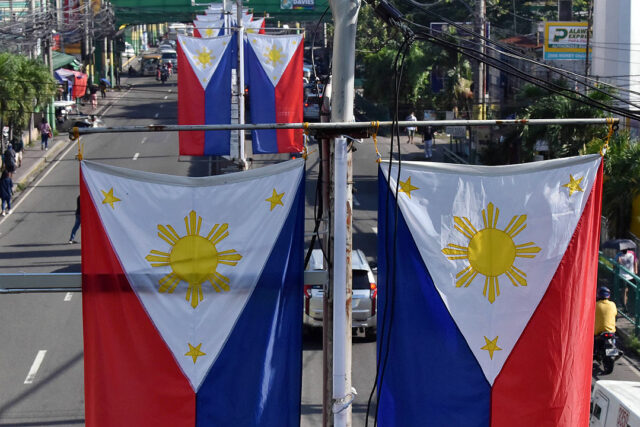By Norman P. Aquino, Special Reports Editor
GENEVA — Geopolitical tensions and recent crises have spurred protectionist policies that are slowly eroding the world’s trading system and could ultimately fragment the global economy, the World Trade Organization (WTO) said, as it called for a renewed drive toward a broader and more inclusive integration.
In its annual Global Trade Report released on Tuesday, the world’s biggest economic organization said the tariff escalation between the US and China has slowed trade growth between them, while there have been signs of trade reorientation along geopolitical lines since Russia invaded Ukraine in February 2022.
Despite these challenges, international trade continues to thrive, and talk of de-globalization is on balance still far from supported by the data, Ralph Ossa, the WTO chief economist, told reporters at a news briefing in Geneva.
“We need to embrace trade instead of rejecting it if we want to overcome the most pressing challenges of our times,” he said. “The report makes the case for extending trade integration to more economies, to more people and to more issues — a process we call re-globalization.”
A strong multilateral trading system is the “best guarantor of economic security” because it provides the options needed when faced with supply shortages, Mr. Ossa said, citing the global coronavirus pandemic as an example.
In the report, the WTO said globalization must evolve in response to new challenges and needs to be accompanied by appropriate domestic policies.
“Re-globalization offers a better path forward,” WTO Director-General Ngozi Okonjo-Iweala said in the foreword of the 134-page report. “Bringing more countries and communities from the margins of the global economy to the mainstream would make for deeper, more diversified markets that are more resilient to shocks.”
Globalization — and WTO — critics have said the WTO’s consensus system needs to be replaced by a new negotiating model that meets 21st century problems including climate change, environmental destruction, low labor standards, human rights and corruption. They are also calling for bilateral and plurilateral deals to level the playing field.
“The WTO is concerned because the issue of trade and commerce has been politically tainted,” Philippine Chamber of Commerce and Industry President George T. Barcelon said by telephone before the WTO event. “Once it’s tainted, it will hold back actions that should come into play in the free market. The Philippines is having difficulty already in the supply chain especially during the coronavirus disease 2019 (COVID-19) pandemic. After that, some countries added another layer by weaponizing trade.”
This has especially affected the agriculture sector, which is heavily dependent on imported inputs such as fertilizer that comes from Russia, Belarus and Ukraine, where there is a war, he added.
“I am all for re-globalization, as long as the WTO can get people to follow the rules.”
In the report, the WTO noted that with security considerations becoming an increasingly influential factor in trade policy, some countries might reshuffle trade relationships due to tensions, but taking this too far would be counterproductive.
“The long-term evidence suggests that trade has contributed positively to peace among nations,” according to the report. “With regard to economic security, recent experiences with the COVID-19 pandemic, extreme weather events and the war in Ukraine have demonstrated how deep and diversified international markets help countries cope with unanticipated shortages by securing supplies from alternative sources,” it added.
Global trade flows have been resilient throughout past shocks, the WTO said, adding that trade costs keep falling as digital technologies facilitate international transactions and economies continue to sign integration deals.
The 164-member trade group admitted that there have been longstanding issues on its agenda, particularly agriculture, which accounts for a big employment pie in many member countries.
For one, trade costs in agriculture exceed those in manufacturing by 50%, penalizing poorer segments in society that rely on this sector.
WARNING SIGNS
Still, the WTO said it is already making a difference here — recent research found that its Trade Facilitation Agreement has had disproportionately positive effects on agricultural trade since it took effect in 2017, with least developed countries posting a 17% increase in agricultural exports as a result.
“Trade can be a powerful magnifying force of domestic competitiveness reforms, but in the absence of such domestic reforms, its role is limited,” Mr. Ossa separately told BusinessWorld in an e-mailed reply to questions. “That said, much remains to be done in the area of agricultural trade policy reforms.”
Trade costs in agriculture are 46% higher than in manufacturing, holding back agricultural exports around the globe, he said, citing the 2023 Global Trade Report. “While not all of this reflects policy barriers, it points to substantial unfinished business in multilateral trade negotiations.”
Mr. Ossa said de-globalization has not happened yet, noting that China remains the biggest trading partner for many economies including the Philippines.
He does not expect this to change soon. He noted that bilateral trade between China and the US reached a record $690.6 billion (P39 trillion) in 2022.
Mr. Ossa said trade was remarkably resilient during the COVID-19 pandemic, bouncing back to pre-pandemic levels less than a year after the first wave of lockdowns.
Trade in digitally delivered services remained strong all along, growing at an average annual rate of 8.1% between 2005 and 2022, outpacing goods (5.6%) and other services (4.2 %).
“But the warning signs must be taken seriously,” he said. “In the report, we looked at trade within and between hypothetical geopolitical ‘blocs’ constructed based on voting patterns in the United Nations General Assembly,” he said.
Goods trade flows between these “blocs” have grown by as much as 6% more slowly than within these ‘blocs’ since the onset of the war in Ukraine, indicating a shift toward friend-shoring, Mr. Ossa said.
“We also report an increasing level of trade concerns being raised about unilateral policies of trading partners at the WTO and the International Monetary Fund has reported a fragmentation of investment flows,” he said.
“All of this will eventually be reflected in reduced trade growth unless countries re-embrace multilateralism or re-globalization,” he added.
The WTO’s next trade forecast will come out in early October, “and it will be interesting to see what direction trade has taken since the spring.”
“Globalization never really went away, but in recent years it has been under serious scrutiny — partly due to international overdependence on China’s manufacturing prowess and the disruption in oil and gas trade due to Russia’s invasion of Ukraine,” said Arthur E. Appleton, a partner at Appleton Luff — International Lawyers and adjunct professor at the Johns Hopkins University School of Advanced International Studies.
Because of China’s actions in the South China Sea and its aggressive rhetoric toward Taiwan, Western countries are making efforts to onshore manufacturing and shorten supply chains, he said in an e-mailed reply to questions.
“Hopefully this is a temporary phenomenon. Despite globalization’s retreat, it remains important, particularly for the Philippines which is beginning to benefit from its various comparative advantages and continued integration into global supply chains,” Mr. Appleton said.
“The Philippines needs globalization to continue the development of its goods sector, and its increasingly important service sector. The rule-based trading system which is the backbone of globalization provides security to the Philippine business community and for Philippine economic development,” he added.
Mr. Appleton said it is in the Philippines’ economic interest to continue its integration into global supply chains despite challenges particularly in agriculture.
On the other hand, he said the WTO is stymied by its reliance on the consensus system.
“Getting 164 members to agree on anything is very difficult,” he said. “The WTO is also hampered by the US decision to block appellate body appointments. Without an effective dispute settlement system, it is more difficult to apply the rule of law when international trade disputes arise.”
Mr. Appleton said WTO members are likely to consider additional plurilateral alternatives to avoid blockages caused by the consensus system, and they need to resolve the dispute settlement impasse.
‘NOT PERFECT’
“The WTO is not perfect — far from it,” Ms. Okonjo-Iweala said in the report. “But the case for strengthening the trading system is far stronger than the case for walking away from it.”
She also said WTO members are acting to reinvigorate the organization, adding that today’s complex challenges require more, not less, international cooperation.
WTO members are actively looking at how to update and upgrade the group’s rulebook so that trade can contribute fully to effective responses.
The alternative to rules-based integration is power-based fragmentation and a world of greater uncertainty, increased socioeconomic exclusion and heightened environmental decline, Ms. Okonjo-Iweala said.
This year’s World Trade Report makes the case that “re-globalization” is a far more attractive alternative, she said, adding that policy makers should find it useful in shaping the future of trade “for peace, people and the planet.”












